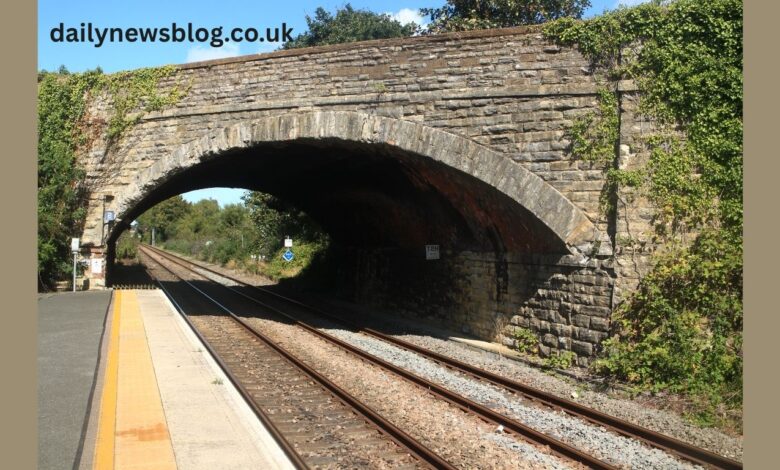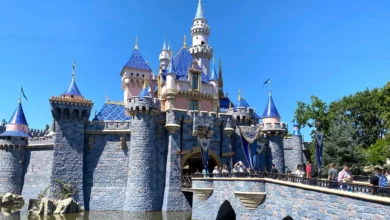You Won’t Believe What’s Hiding in These Railway Arches

Introduction
Railway arches have long been a part of city infrastructure, often overlooked by passersby focused on the trains above. Yet, in recent years, these arched underpasses have evolved into some of the most innovative spaces in modern urban planning. Once just structural supports for rail lines, they are now thriving hubs of creativity, commerce, and community.
From artisan bakeries to yoga studios, distilleries to coworking offices, railway arches are proving their versatility. Their appeal lies in a unique blend of historic charm and industrial aesthetics. Cities around the world are now unlocking the hidden value of these arches, transforming neglected zones into vibrant destinations.
The History and Evolution of Railway Arches
The origin of railway arches dates back to the 1800s when elevated railway lines were constructed to reduce road congestion and improve transportation efficiency. These elevated tracks needed stable support systems, which led to the widespread use of arches—an architectural feature known for its strength and durability.
Originally, the spaces beneath were largely ignored or used for mundane functions like storing coal, parking vehicles, or sheltering maintenance equipment. With the industrial age in full swing, few saw these arches as anything more than utilitarian structures.
However, over time, especially as inner cities became denser, developers and designers began to recognize the untapped potential of railway arches. These robust, sheltered spaces were often in high-footfall areas but cost significantly less than standard commercial units. This unique combination made them highly attractive to small businesses, startups, and creatives looking to make a mark.
Today, cities are embracing adaptive reuse strategies, and railway arches are at the forefront of this urban revival.
Modern Uses of Railway Arches
Creative Commercial Spaces
Across many urban centers, railway arches are now being transformed into hubs of entrepreneurship. Their raw, industrial aesthetic appeals to a wide range of businesses, especially those that value authenticity, character, and affordability.
Independent cafes, craft breweries, vintage clothing stores, music rehearsal spaces, and boutique gyms are just some of the businesses thriving in these spaces. The arches’ unique acoustics and spacious interiors make them particularly popular for artistic ventures like recording studios and performance venues.
For example, in Manchester, entire clusters of railway arches have been converted into “creative quarters” that house graphic design firms, photographers, and ceramic artists. This reinvention has brought life back to underused neighborhoods and created a strong sense of local identity.
Residential and Mixed-Use Conversions
The residential use of railway arches might sound unconventional, but it’s gaining momentum. Architects and developers are taking on the challenge of converting these curved, cavernous structures into cozy and efficient living spaces.
Through clever design, such as installing mezzanine levels, skylights, and energy-efficient insulation, these arches become modern micro-lofts. Although the curved walls pose some limitations, they also create a distinctive atmosphere that’s different from traditional box-like apartments.
Mixed-use developments are becoming particularly popular. In these models, the front portion of the arch may house a business, like a coffee shop or studio, while the rear or upper level is reserved for residential use. This format is ideal for city dwellers looking for a live/work balance, especially in creative industries.
Benefits of Revitalizing Railway Arches
There are countless benefits to repurposing railway arches. Environmentally, it’s a form of sustainable development—reducing the need for new construction and minimizing material waste. Urban planners see it as an efficient way to combat the rising costs and scarcity of commercial property in major cities.
Socially, these arches often breathe new life into forgotten areas, promoting economic activity in places that were previously underdeveloped. The businesses that operate from railway arches often reflect the local community and offer culturally rich experiences that larger chains can’t replicate.
Additionally, they often foster collaboration and innovation. When like-minded entrepreneurs and creatives are clustered together in archway communities, it naturally leads to cross-promotion, events, and cultural activities that benefit everyone.
Notable Cities Embracing Railway Arches
London
London is leading the way when it comes to reimagining the use of railway arches. With over 5,000 arches spread across the city, there has been a conscious effort to transform them into thriving business spaces. The Arch Company, which now owns a significant portion of these arches, works directly with local entrepreneurs to lease them at competitive rates.
From Peckham to Shoreditch, these spaces are bursting with energy. Food markets, music venues, and art studios have taken root beneath the rail lines. Arches like those at Flat Iron Square have become destinations in their own right, drawing crowds looking for an authentic London experience.
Berlin
Berlin’s culture of underground innovation makes it a natural home for railway arch conversions. Known for its openness to artistic expression and alternative lifestyles, the city has embraced the gritty charm of these spaces. Many arches are used as nightclubs, experimental theaters, or record stores—especially in areas like Kreuzberg and Friedrichshain.
This use of railway arches has become so ingrained in Berlin’s identity that some events are specifically promoted as “arch parties,” celebrating the intersection of space, sound, and subculture.
Melbourne & New York
Melbourne is another example of the smart integration of railway architecture into modern urban design. The Flinders Street area has seen a creative revival, with railway arches playing host to cafes, exhibitions, and creative markets.
In New York, areas like DUMBO in Brooklyn utilize similar spaces for pop-up events and flexible workspaces. The DUMBO Archway, specifically, is now a public plaza and community gathering space beneath the Manhattan Bridge—a similar structure to many railway arches, proving their global versatility.
Challenges in Repurposing Railway Arches
Despite their potential, railway arches are not without limitations. The first hurdle is often the architecture itself—the curved walls can make fitting standard furniture and fixtures difficult. Heating and cooling the spaces efficiently also poses challenges, particularly in older, uninsulated arches.
Soundproofing is another major concern, especially in arches directly under active train lines. The noise from above can affect both commercial and residential viability unless the space is acoustically treated.
There’s also the question of access and lighting. Many arches are located in areas with limited natural light or foot traffic, which may deter certain types of businesses. Developers also face bureaucratic challenges, including complex planning permissions, building code restrictions, and heritage preservation mandates.
The Future of Railway Arches
The future looks bright for railway arches as cities look for smarter ways to use existing infrastructure. Architects are exploring eco-friendly design options like solar panels, green walls, and rainwater harvesting systems. These features not only reduce carbon footprints but also make the spaces more appealing and livable.
Urban development projects now often include railway arches as integral components rather than leftover spaces. By integrating them into bike paths, community gardens, and cultural districts, cities are redefining what public infrastructure can be.
Expect to see even more digital innovation within these spaces, too—smart lighting, IoT security systems, and hybrid workspaces tailored for the post-pandemic era are all part of the railway arch renaissance.
Conclusion
From forgotten corners of the city to thriving creative zones, railway arches have undergone a spectacular transformation. Their rugged charm, versatility, and affordability make them prime real estate for the next wave of urban development. As cities continue to evolve, so too will the role of railway arches—moving from industrial relics to the beating heart of innovation, culture, and community life.
So next time you pass beneath a rumbling train, take a look around. You might just stumble upon a hidden bakery, a live concert, or a design studio tucked inside one of these incredible spaces. You won’t believe what’s hiding in these railway arches—but you’ll be glad you found out.
FAQs
Q1: What are railway arches called?
Railway arches are often referred to as viaduct arches, railway bridge arches, or simply rail arches. In architectural circles, they are considered a type of masonry arch used in bridge and viaduct construction.
Q2: Who owns the railway arches in London?
The majority of railway arches in London are owned by The Arch Company, which took over around 5,200 properties from Network Rail in 2019. The company leases these arches to over 3,800 small and medium-sized businesses across the UK.
Q3: How much to rent a railway arch in London?
Rental costs can vary greatly based on location, size, and condition. On average, leasing a railway arch in London could cost anywhere from £1,500 to £5,000+ per month. Renovated arches in high-demand areas like Shoreditch or Borough Market may command premium rates.
Q4: Why are arches so important?
Arches are crucial in architecture because they distribute weight evenly, making them ideal for supporting heavy structures like railways. Their curved design offers strength and stability while requiring fewer materials, making them both functional and efficient. Historically, they have also become iconic elements in city landscapes.
Q5: What is a railway called?
A railway, also known as a railroad (especially in the U.S.), is a system of tracks along which trains operate to transport people or goods. The term can refer to the entire transportation network, including tracks, stations, trains, and related infrastructure.




